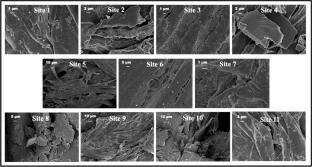Microplastics in Indian Brackish Water Lagoon: Occurrence and Distribution in the Chilika Lake
Abstract
Microplastics have become a serious concern in the contemporary world due to their widespread and hazardous nature. This study investigates microplastic distribution in one of the largest brackish water lagoons in the world (Chilika Lake, India) to bridge the knowledge gap in a transitional environment. Sediment and water samples were investigated to estimate microplastic count and were categorized based on their shape, color, size, and polymer type. The overall abundance of microplastic in sediment and water sample from Chilika Lake varied from 25.2 ± 9.8 items/kg to 7 ± 2.2 items/kg and 110.7 ± 35.6 items/100L to 26 ± 8.1 items/100L, respectively. Anthropogenic activities such as extensive fishing activities and tourism were attributed to be the major source of microplastic besides upstream loads through inflowing rivers. Fragments and foams were the most commonly occurring microplastic shapes in sediment and water samples, respectively. Sediment samples were found to be highly abundant in microplastic particle size <1 mm. Water samples were dominated by white-color foams in 2–5 mm size range of microplastics. Ten different types of microplastic polymers were identified, of which polypropylene and polystyrene were the most dominant microplastic in sediment and water samples. Microplastic morphology showed surface features that can be attributed to their weathering. The study provides baseline information on microplastics in Chilika Lake to develop an insight into the associated environmental and health risks.
Graphical abstract


 求助内容:
求助内容: 应助结果提醒方式:
应助结果提醒方式:


